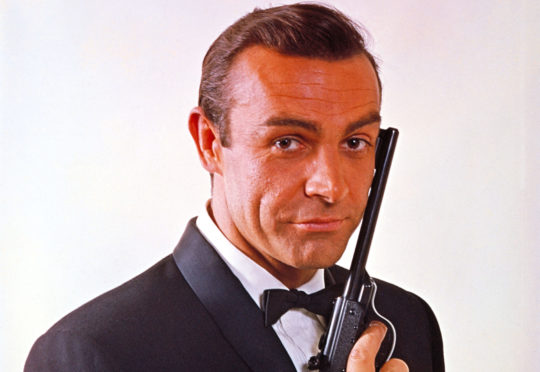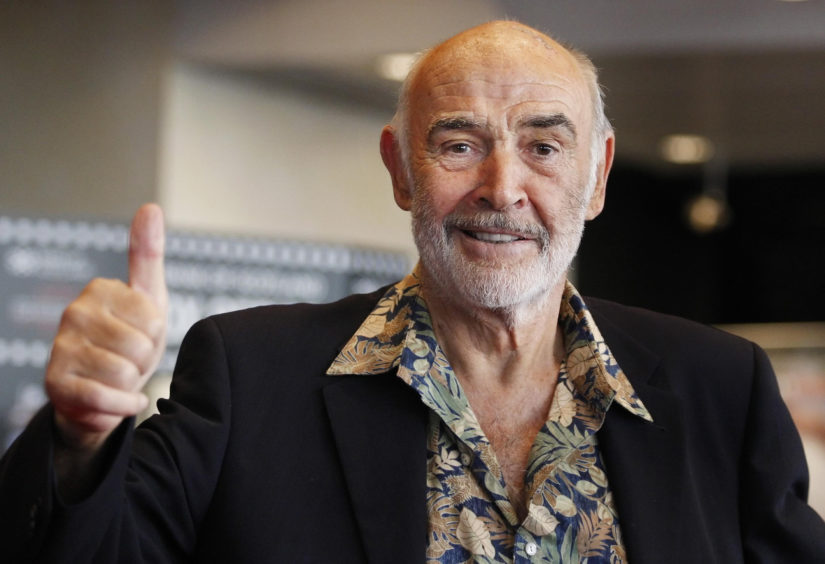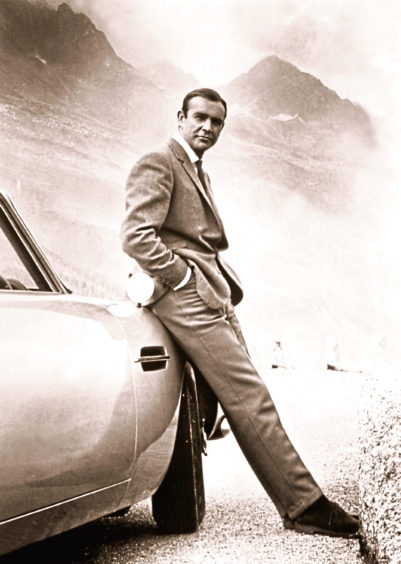
Sir Sean Connery turns 90 on Tuesday, only weeks after he was once again named the greatest Bond in a new poll.
But one of his friends and long-time collaborator, Murray Grigor, has finally come clean to reveal the iconic actor didn’t take the role of 007 seriously.
“He never really thought anything of it,” said Murray. “He was sent a copy of the Casino Royale book to read, but he didn’t. He gave it to his wife, Diane Cilento, who is also an actor, and she said it was complete rubbish, misogynistic, and the only way to do it was to send it up, because it was horrible.
“That’s what he does, I think. The one-liners in the movies were often his own. He says he’s never watched the films and has no opinions on them. He saw a bit of Daniel Craig’s version and thought he was quite good, but Sean just wanted to get out of it and become a serious actor and do movies he believed in.
“He went on to make films like The Hill and The Offence, which are powerful and show his personality. He was a great actor.”
Film-maker Murray and Sean met at the Edinburgh Festival in the late 1960s and went on to work together on several projects, including the documentary Sean Connery’s Edinburgh, bestselling book Being A Scot and, most recently, Ever To Excel, a documentary about St Andrews University released in 2012. They also teamed up at the Edinburgh Film Festival, where Murray was director and Sean was patron.
“He’s the only actor I’ve worked with who wanted to remove things from the script. He liked to fillet it, because he said the camera could express thought – Hitchcock taught him that – and his gestures, like the eyebrow going up, are incredible,” said Murray.
“But when he was starting out in South Pacific, fellow actor Bob Henderson told him he had certain problems. Bob told him no one in the troupe could understand a word he said and some thought he was Polish.
“So Sean bought a tape recorder and listened to himself and it got him into a way of speaking that was more understandable. But he didn’t want to lose his voice or where he came from completely. He told me if he didn’t have a residue of his Edinburgh accent, he wouldn’t know who he was.
“It was only after he grew up he was told he was from a deprived neighbourhood. He had a great time as a child and there was an amazing community spirit.
“His dad worked in a tyre factory and his mum was a cleaner for the Polish Army, while Sean started delivering milk at seven years old. Eventually he worked for the dairy, driving a horse and cart. He told a story of one winter’s day, having to go up a steep brae at Dean Bridge, and having to push the horse up the hill along with the cart.”
Shortly after the opening of the Scottish Parliament, Murray proposed an eight-part TV series, Sean Connery’s Scotland, and spent two years writing it, but the project fell through.
So, too, did an account of his life to be written by Beatles biographer Hunter Davies.
“It wasn’t going well and Sean handed back the $6.5m advance he’d been given for the book. That’s when we did Being A Scot, a book of essays on Scotland and our feelings about the country,” said Murray.
“When we launched it at the Edinburgh Book Festival, we walked out into this avenue where hundreds of women were all looking at Sean, and I was in the same eye line.
“One woman pushed past me to whisper to him: ‘You’re the sexiest man alive’. His reply came fast: ‘I wouldn’t be very sexy if I was dead!’”
It had been a tumultuous period for Sir Sean, including a bad experience on the set of The League Of Extraordinary Gentlemen, a big-budget 2003 action movie which turned out to be his last film.
“There were two reasons I wanted to make the Sean Connery’s Scotland series,” continued Murray. “One, because he had said that silly thing on the Barbara Walters interview in the States about hitting women, and I wanted to show the guy he really was. And, also, so that the last thing he did wasn’t that terrible film, The League Of Extraordinary Gentleman. It was embarrassing.
“Sean would call me during the shoot and say he was going to kill the director, Stephen Norrington. Sean wanted nothing to do with it. He was going to write to the Screen Actors Guild in America and ask they not endorse Norrington. He retired because he felt he’d had a great innings, working with people like Alfred Hitchcock, John Huston, Sidney Lumet and Umberto Eco, and it was time to stop.”
Murray, who is also an authority on Charles Rennie Mackintosh, feels Sean hasn’t always been appreciated in his homeland.
“He shares with Mackintosh the issue that success is sometimes challenged as a Scot, there’s always a question mark, and he feels put down by that at times.
“I remember when he was paid $500,000 for a day’s filming on Robin Hood: Prince Of Thieves, and he gave the money to Scottish universities. At the press conference to announce it, some twit said it was just another tax dodge, and Sean heard him.
“There are many instances of that. People ask why he sounds off about Scotland when he doesn’t live here.
“He also gave his $1 million fee from Diamonds Are Forever to help set up the Scottish International Education Trust, which gives grants to Scots who show ability and promise.”
Sean, who won an Oscar for his role in 1987’s The Untouchables, and also starred in Entrapment, Highlander and Indiana Jones And The Last Crusade, continues to live a quiet life in the Bahamas with his second wife of 45 years, Micheline, and makes very few public appearances.
Murray added: “He always said he wanted to grow old like Picasso. Old age is not for sissies.
“I wish him well for his 90th birthday. He’s an extraordinary man.”
Meanwhile, Goldfinger has been named Scotland’s favourite movie starring Sir Sean. Internet researchers analysed Google search trends for all of the actor’s movies to discover which ones still attract the most interest in Scotland and also globally.
They found that 56 years after its release, Scots still search for Goldfinger an average 1,147 times per month.
Creator’s licence to cringe
Sean Connery may have ad-libbed some of Bond’s corniest one-liners in the movies but, to be frank, there was enough cheesy chat on the pages of Ian Fleming’s books, the films’ source material. Here is just a flavour of Bond’s best, or worst, chat-up lines.
When you’re very frightened, you know, your hair really does stand on end. Mine did anyway, when somebody put a poisonous centipede in my bed – Dr No
For me, the right ingredients of an exciting adventure are physical exertion, mystery and a ruthless enemy – Dr No
You probably wouldn’t find 10 non-squeal killers in France – Casino Royale
The trouble always is not how to get enough caviar, but how to get enough toast with it – Casino Royale
Your eyes have the rare quality of chatoyance. “Sorry, of what?” Sorry, when jewels have chatoyance the colour in the lustre changes with movement in the light – Diamonds are Forever

Enjoy the convenience of having The Sunday Post delivered as a digital ePaper straight to your smartphone, tablet or computer.
Subscribe for only £5.49 a month and enjoy all the benefits of the printed paper as a digital replica.
Subscribe © PA Archive/Press Association Images
© PA Archive/Press Association Images © Moviestore/Shutterstock
© Moviestore/Shutterstock